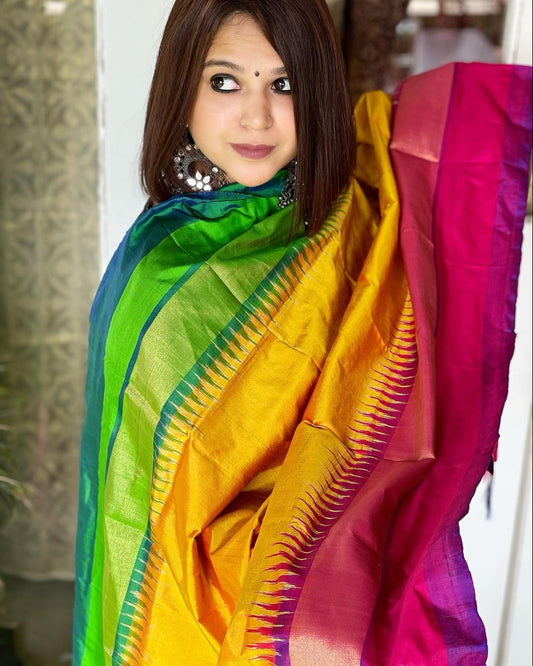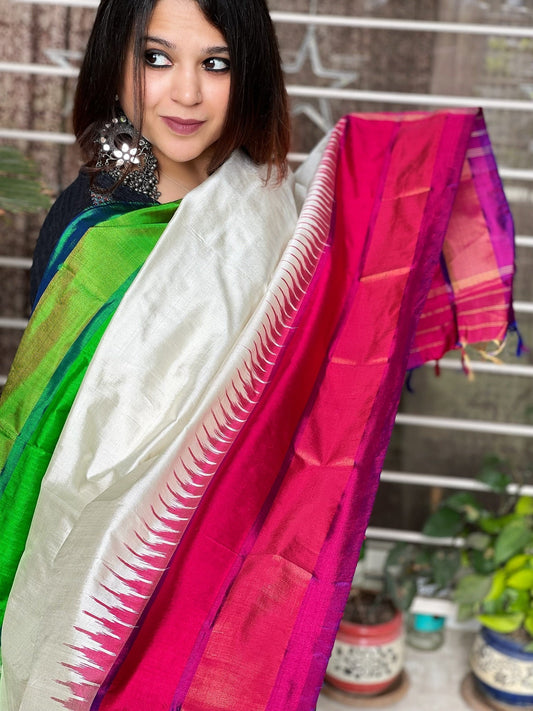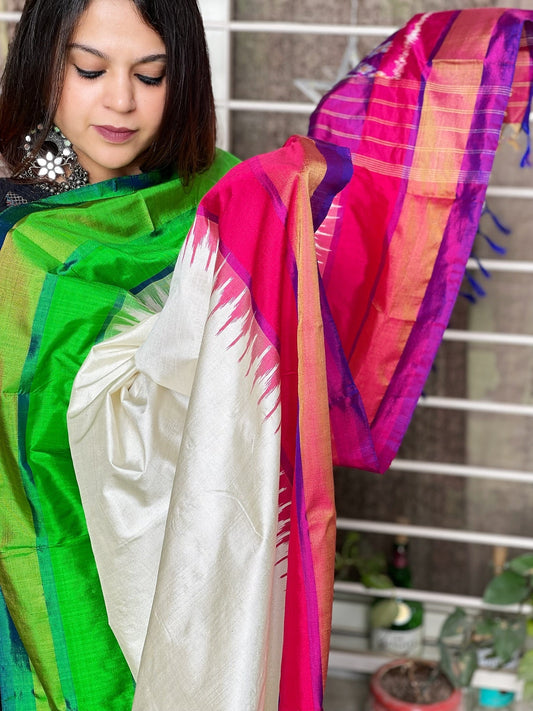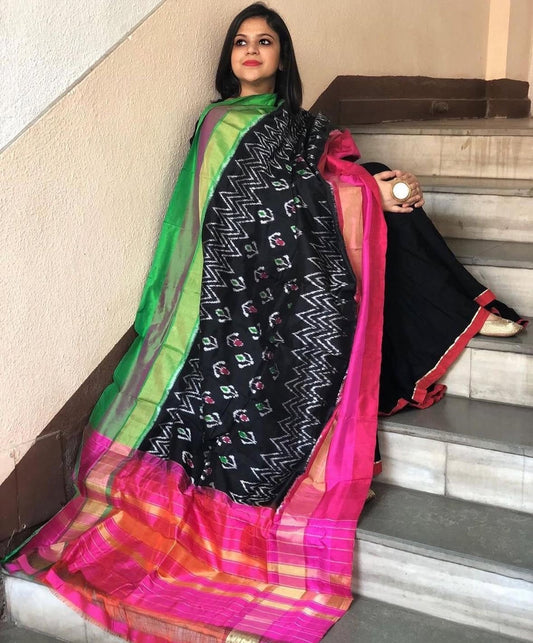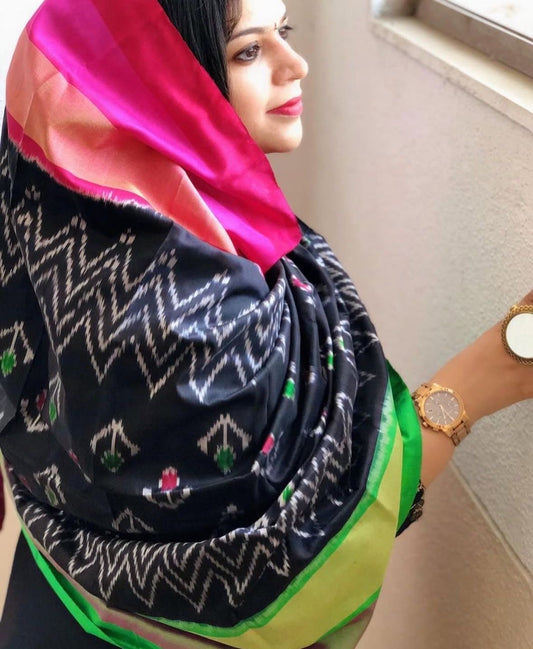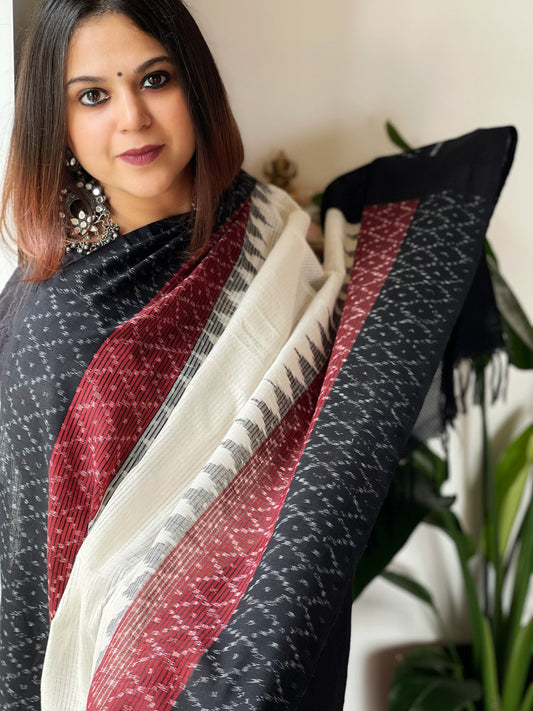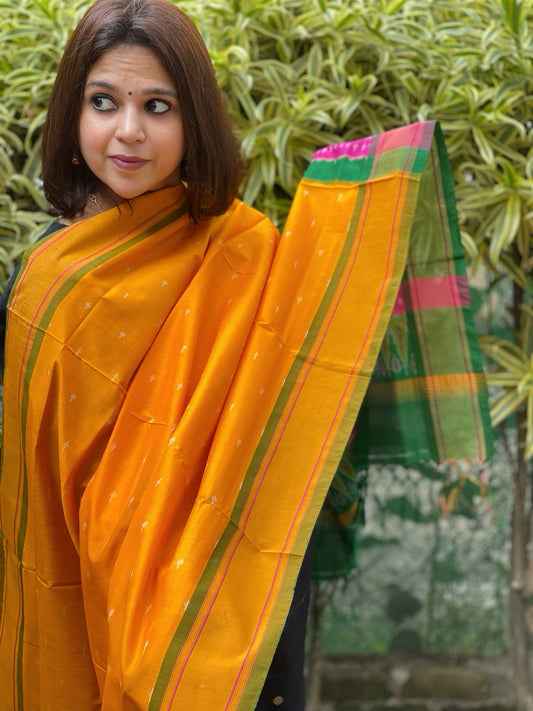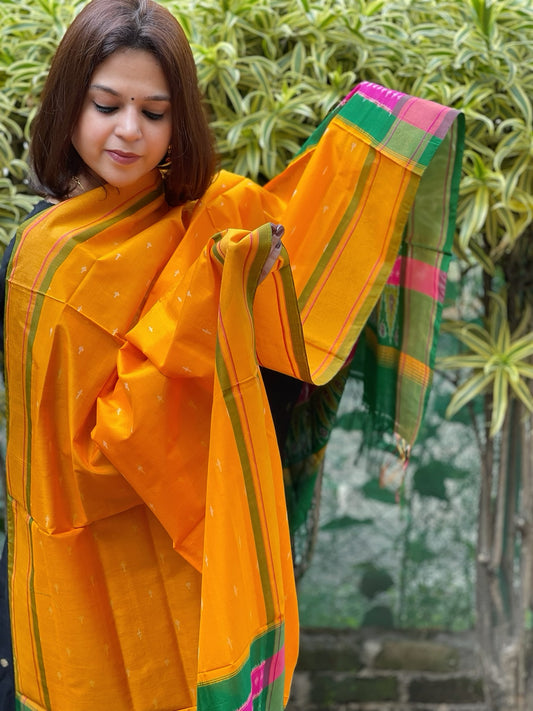As avid fans and creators of Indian handmade textiles, we intimately understand the unique characteristics and care that these beautiful pieces demand, especially as they face different environmental conditions. Our stoles, dupattas, and shawls aren't just fabric items; they're embodiments of artistry, tradition, and personal stories woven into every thread. Thus, preserving their beauty and lifespan amid varying weather conditions becomes a priority for both us and the wearers of these exquisite crafts.
Weather influences fabric significantly — from the humid rains that can dampen and weaken fibres to the fierce sun that can fade vibrant colours. In our journey together, we'll explore how best to shield these valuable textiles from adverse weather effects, ensuring they remain a part of your style and heritage for years to come.
Knowing which steps to take and understanding why each is necessary will help you maintain your textiles' vivid colours and robust textures through seasons and time. This knowledge not only serves to retain the functional aspects of the fabric but also preserves the cultural essence embedded within every woven pattern.
How Different Weather Conditions Affect Handmade Textiles
Weather plays a pivotal role in the lifespan of handmade textiles, particularly those cherished pieces we often use and display with pride. For starters, exposure to sunlight can cause significant colour fading. The ultraviolet rays break down the chemical bonds in dye, leading to a washed-out appearance if left unchecked. This is particularly true for the natural dyes often used in Indian handicrafts, which may be more susceptible to fading than their synthetic counterparts.
Furthermore, high humidity can also adversely affect handmade textiles. Moist conditions encourage the growth of mould and mildew, which can not only leave unpleasant stains but also damage the fibres themselves, making them weak and brittle over time.
On the other hand, cold, dry weather isn’t without its challenges. Low humidity environments can make natural fibres become dry and fragile, leading to cracks or tears when the fabric is handled or washed. Each of these conditions presents a unique challenge that we must address to maintain the integrity and beauty of our textile crafts.
Protective Measures for Your Textiles During the Rainy Season
During the rainy season, taking proactive steps to safeguard our precious textiles can make all the difference in extending their vibrancy and usability. Here is a practical guide to protecting your textiles when the rains begin to pour:
- Use Silica Gel Packets: Placing silica gel packets alongside your textiles in storage can help absorb any errant moisture that might seep in, reducing the risk of mould and mildew forming.
- Avoid Direct Exposure: If you’re airing out textiles, ensure they're under a covered area where rain exposure is unlikely. Direct contact with rain can lead to water stains or prolonged dampness, which are breeding grounds for fungal growth.
- Regular Air Circulation: Ensure your storage areas are well-ventilated. Good air circulation helps to keep damp and musty smells at bay and reduces moisture accumulation, which is high during the rainy season.
- Inspect Regularly: Make it a routine to check your stored textiles for any signs of moisture or damage during this season. Early detection can save a lot of potential damage and keep your textiles in top condition.
- Use Breathable Covers: When storing, use covers made from natural fibres like cotton, which allow for air movement and do not trap moisture, unlike plastic covers, which can exacerbate moisture issues.
By following these precautions, we can ensure that our handcrafted textiles remain pristine and vibrant, even when the elements are not in our favour.
Caring for Handmade Textiles in Extreme Heat
When the mercury rises, the care of your handmade textiles needs special attention. Heat can affect the fibres of your textiles, causing them to weaken or fade if not properly managed. First and foremost, it’s essential to keep these textiles out of direct sunlight. Prolonged exposure to the sun can lead to fading colours, which takes away from the vibrant beauty of handcrafted fabrics. We also recommend storing your textiles in a cool, dark place during peak summer months. A breathable cotton bag is ideal for this purpose as it allows the fabric to aerate, preventing any moisture build-up that could lead to damage.
Another important aspect is ironing these delicate items. We always advise ironing handmade textiles with a low heat setting and preferably with a pressing cloth between the iron and the fabric. This will help to avoid scorching and preserve the integrity of the fibres. Staying mindful of these guidelines during the hot weather will ensure that your handcrafted textiles remain in impeccable condition.
Best Practices for Winter Storage of Your Shawls and Stoles
As winter approaches, it’s time to think about the best way to store your precious shawls and stoles. Cold and damp conditions can be harmful to handmade textiles, leading to issues like mildew or fibre degradation. We suggest storing your shawls and stoles in a dry place. Adding silica gel packets in the storage area can help absorb any excess moisture, safeguarding the fabric from dampness.
Moreover, it’s a good practice to fold your textiles carefully with acid-free tissue paper in between the folds. This prevents any harsh creases and keeps the fabric supported. Every few weeks, it’s beneficial to refold these textiles in a different pattern to avoid stressing the fabric at the same fold lines repeatedly. By following these winter storage practices, you can protect your shawls and stoles, ensuring they remain as splendid as when you first received them.
Final Thoughts
Caring for your handmade textiles through various seasons requires attention and a bit of know-how, but preserving these exquisite pieces of art is worth the effort. Whether shielding them from the intense heat of summer or preparing them for the damp and cold of winter, each step you take helps maintain the beauty and integrity of your textiles. At Masakalee, we are committed to providing high-quality handcrafted textiles and the knowledge you need to care for them adequately.
By choosing to invest in sustainable, well-crafted textiles, you’re not just purchasing a product; you’re supporting a tradition and a way of life that values the craftsmanship and the environment. As you continue to enjoy your beautiful shawls, stoles, and other textiles, remember these tips to ensure they last for years to come.
We invite you to visit Masakalee and explore our unique collection, where each piece tells a story of heritage and meticulous craftsmanship. Embrace the art of traditional handmade textiles with us today.


